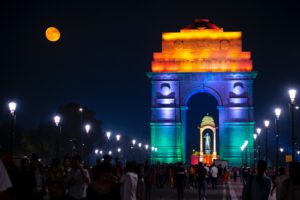Unveiling the Indomitable Spirit of Subhash Chandra Bose: A Revolutionary Journey
Introduction
In the annals of India’s struggle for independence, few names evoke the spirit of resilience and valor as powerfully as that of Subhash Chandra Bose. Fondly known as Netaji, he was a charismatic leader, a revolutionary force, and a symbol of unwavering determination. This blog post delves into the life, contributions, controversies, and enduring legacy of the indomitable Subhash Chandra Bose.
Early Life and Education
Subhash Chandra Bose, who was born in Cuttack, Orissa, on January 23, 1897, came from a family with a long history of national service. During his early studies in Calcutta, he shown both academic prowess and an intense enthusiasm for the concept of an independent and unified India. During his early years, Netaji started to show signs of leadership and intellectual curiosity.
The Call to Serve the Nation
The call to serve the nation beckoned Bose, leading him to England to pursue further studies at Cambridge University. However, destiny had different plans, and the fervor of the Indian independence movement pulled him back to his homeland. Subhash Chandra Bose plunged into the political arena, aligning himself with the ideals of Mahatma Gandhi and the Indian National Congress.
Bose and the Indian National Congress
While Bose shared a common goal with the Indian National Congress, differences in ideologies and strategies emerged. His approach was marked by a sense of urgency and a desire for more aggressive action against British colonial rule. These differences led to a parting of ways, with Bose charting an independent path to fulfill his vision for a liberated India.
The Azad Hind Fauj: A Revolutionary Force
One of the most powerful chapters in Subhash Chandra Bose’s legacy is the formation of the Azad Hind Fauj (Indian National Army or INA) during World War II. Envisioning a military force to free India from British rule, Netaji rallied soldiers from prisoners of war and civilians in Southeast Asia. The INA marched under the resounding slogan, “Delhi Chalo” (March to Delhi), echoing the determination to reclaim the capital.
Controversies and Differences
There were disagreements and disputes throughout Subhash Chandra Bose’s path inside the nationalist movement. His allied efforts with the Axis nations in World War II, including his requests for aid from Germany and Japan, sparked criticism and discussions regarding the wisdom and pragmatism of such coalitions. Historians continue to examine the intricacies of politics during times of war.
Legacy of Netaji Subhash Chandra Bose
The legacy of Netaji Subhash Chandra Bose transcends his role as a military strategist and political leader. He left an indelible mark on the psyche of the Indian populace, symbolizing the undying spirit of resistance and the quest for freedom. Bose’s leadership style, characterized by charisma and decisiveness, remains a source of inspiration for generations to come.
Impact on India’s Independence
Although Netaji’s vision for a free India was not realized during his lifetime, his contributions were instrumental in paving the way for the ultimate triumph of independence. The INA’s role in creating unrest within the British Indian Army, coupled with the global shifts after World War II, contributed to the mounting pressure on the British Empire to grant India its freedom.
Unraveling the Mystery: Disappearance and Theories
The circumstances surrounding Netaji Subhash Chandra Bose’s disappearance in 1945 remain shrouded in mystery. The official version suggests that he died in a plane crash in Taipei, Taiwan. However, numerous conspiracy theories and claims of survival persist, adding a layer of intrigue to the enigma of his final days. The quest for the truth continues to captivate researchers and historians.
Honoring the Hero: Memorials and Tributes
Netaji’s contributions to India’s independence are commemorated through various memorials and tributes across the country. The iconic INA War Memorial in Singapore, the Netaji Subhas Chandra Bose Island in the Andaman and Nicobar archipelago, and the Netaji Bhawan in Kolkata stand as testaments to his enduring legacy. His birth anniversary, celebrated as “Parakram Diwas,” is a day of remembrance and homage.
Conclusion
In the tapestry of India’s struggle for independence, Subhash Chandra Bose emerges as a singular figure whose impact resonates across time. His revolutionary zeal, dedication to the cause, and unwavering commitment to freedom continue to inspire. The legacy of Netaji is not just a historical narrative; it is a living testament to the power of a single individual to ignite the flames of change and propel a nation towards its destiny of liberty and sovereignty.